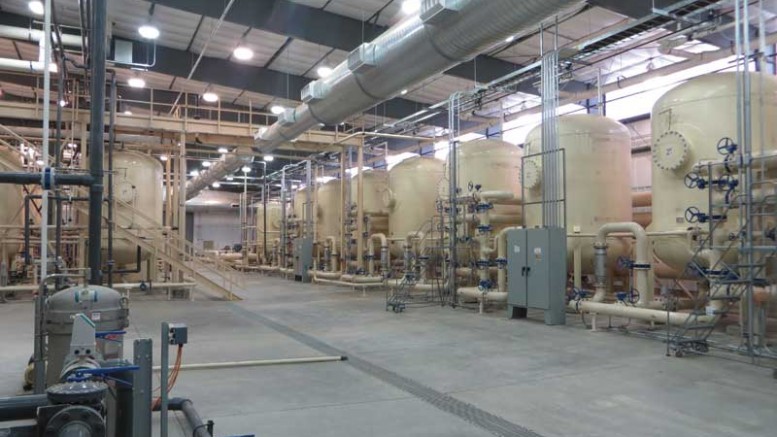Ur-Energy (TSX: URE; NYSE-MKT: URG) has cut both its workforce and annual production guidance, amid the depressed uranium prices.
Ur-Energy recently announced that it has eliminated 12 employees, or 15% of its staff, from the Littleton, Colo.; Casper, Wyo.; and Lost Creek locations.
Before the reductions, it had 79 employees.
As part of its cost-saving measures, Ur-Energy has asked several employees to change positions or add responsibilities. The staff reduction and reorganization could result in US$1.5 million in annual savings, starting in 2017.
While the company has a strong base of long-term contracts averaging US$50 per lb. uranium oxide (U3O8), Jeff Klenda, the company’s chair and CEO, said the changes were necessary to drive down costs in response to the weakening spot price in 2016.
“Difficult times require difficult decisions. Sadly, in this case, it meant saying goodbye to high-quality people whom we truly hate to lose,” he said in a release.
The firm has offered the affected employees severances and assistance to find other employment opportunities. The reorganization should be complete in the coming weeks.
The monthly average for spot prices has fallen 21% from US$34.70 per lb. in January to US$27.25 per lb. in May, making the company take proactive measures.
In April, major producer Cameco (TSX: CCO; NYSE: CCJ) suspended the Rabbit Lake mine and trimmed output at the McArthur River operation, both in Saskatchewan, while deferring wellfield development at its U.S. in-situ recovery operations. As a result, it lowered its 2016 guidance to 25.7 million lb. U3O8, down from 30 million lb. earlier.
While the spot price has rebounded slightly to close June 6 at US$28.25 per lb., Ur-Energy remains cautious and has no exploration planned for 2016 and 2017.
It has trimmed its 2016 production guidance at the Lost Creek mine in Wyoming to between 600,000 and 700,000 lb. U3O8, from 650,000 to 750,000 lb. earlier.
The revised figure is more than enough for the producer to meet its remaining long-term sale commitments for the year.
Ur-Energy’s contractual sales obligations for 2016 are 662,000 lb. U3O8 at an average realizable price of US$47.16 per lb. U3O8. This amount includes the 25,000 lb. sold under contract in the first quarter and the 200,000 lb. it assigned during that quarter to a third party.
“We don’t have to produce those [assigned] pounds, basically, somebody else does. We strip the profits out on those contracts more or less,” the company’s chief financial officer Roger Smith said.
For the year, the junior is responsible for delivering 462,000 lb. U3O8. “Anything that we produce over and above the 462,000 lb. is available to build inventory and/or sell into the spot market, if prices support it,” he added.
From 2016 to 2021, the junior is contracted to deliver 3.1 million lb. at an average price of US$49.81 per lb., which is US$20 per lb. more than the current spot price.
At the end of March 2016, Ur-Energy had 266,842 lb. in total inventory, up 46% from the end of 2015, Cantor Fitzgerald analyst Michael Wichterle notes. Despite the lower production guidance, he has a “buy” rating and a $3-per-share target price.
In Toronto, Ur-Energy lost 2.4% to close June 9 at 81¢ per share.


Be the first to comment on "Ur-Energy trims workforce, annual output"